Discover 11 hidden attractions, cool sights, and unusual things to do in Faribault (United States). Don't miss out on these must-see attractions: Cathedral of Our Merciful Saviour, Alexander Faribault House, and Congregational Church of Faribault. Also, be sure to include Thomas Scott Buckham Memorial Library in your itinerary.
Below, you can find the list of the most amazing places you should visit in Faribault (Minnesota).
Table of Contents
Cathedral of Our Merciful Saviour
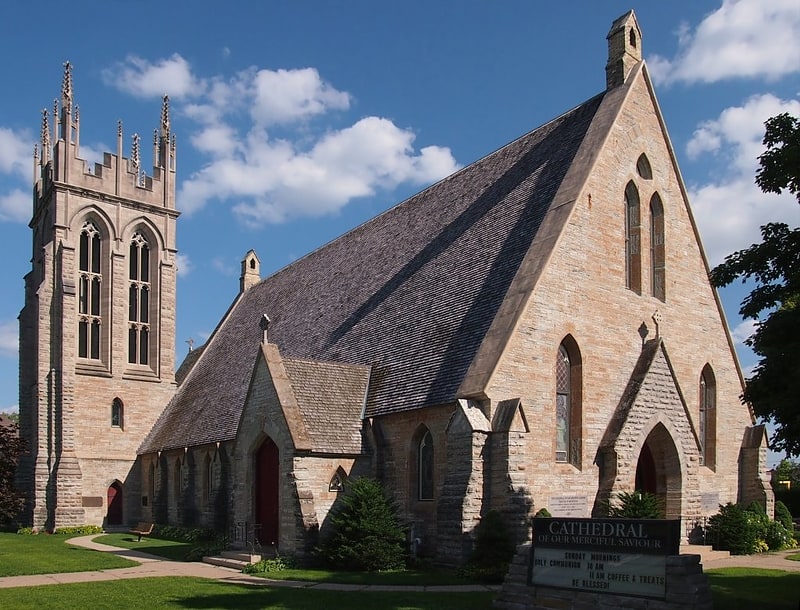
Episcopal church in Faribault, Minnesota. The Cathedral of Our Merciful Saviour in Faribault is the oldest cathedral in Minnesota. Built 1862–1869, it was the first church in the Episcopal Church in the United States of America designed as a cathedral. The architect was James Renwick Jr. who also designed St. Patrick's Cathedral in New York, the Smithsonian Institution Building in Washington, D.C., and a very similar church, the Christ Church by the Sea in Colón, Panama. On August 10, 1979, the cathedral and its guild house were added to the National Register of Historic Places. On February 19, 1982, there was a boundary increase to add the bishop's residence to the National Register.
Our Merciful Saviour was founded by Bishop Henry Benjamin Whipple, who is buried beneath the altar. In 1941 St. Mark's Episcopal Cathedral in Minneapolis was dedicated as the seat of the bishop for the Episcopal Diocese of Minnesota, but the Cathedral of Our Merciful Saviour retains its status as a full cathedral as well.[1]
Address: 515 2nd Ave NW, 55021-4203 Faribault
Alexander Faribault House

Museum in Faribault, Minnesota. The Alexander Faribault House is a historic house museum in Faribault, Minnesota, United States. Built in 1853, it was the first wood-frame house constructed in Rice County, Minnesota. It was built by fur trader Alexander Faribault in the Greek Revival style. Besides serving as a house, it also served as a civic center, polling place, and a church. The local address of the house is 12 First Avenue, Faribault, MN. The house was listed on the National Register of Historic Places in 1970.
Alexander Faribault, son of Jean Baptiste Faribault, was a contemporary of Henry Hastings Sibley and served as his secretary for a time. In 1835, Alexander Faribault set up a trading venture at the confluence of the Straight River and the Cannon River. He had a relationship of mutual respect with the Dakota Indians with whom he traded, even to the degree of sheltering friendly Indians during the Dakota War of 1862. In 1853, he built a large frame house. His house reflected his prosperity, with nine bedrooms, a music room, a parlor, a sitting room, an office, a kitchen, a summer kitchen, and a sewing room. Part of his wealth came from "traders' claims" stemming from the Treaty of Traverse des Sioux, but he was also the proprietor of a sawmill and a flour mill. In turn, he was generous to the community, donating $3,000 to Bishop Henry Benjamin Whipple for the church and for Shattuck School. He also donated land for the Seabury Divinity School. He served as a delegate to the Minnesota Territorial Legislature and remained friends with Henry Mower Rice and Henry Hastings Sibley, even though Rice and Sibley were personal and political enemies.[2]
Address: 12 First Ave NE, Faribault
Congregational Church of Faribault
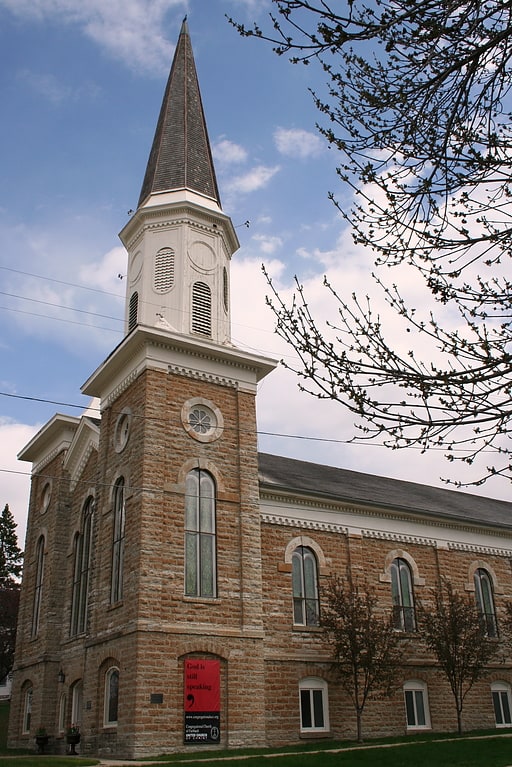
United church of christ in Faribault, Minnesota. Congregational Church of Faribault is a historic church at 227 3rd Street, NW in Faribault, Minnesota, United States. It was built in 1867 and was added to the National Register of Historic Places in 1977.[3]
Address: 222 3rd Ave NW, 55021-5119 Faribault
Thomas Scott Buckham Memorial Library
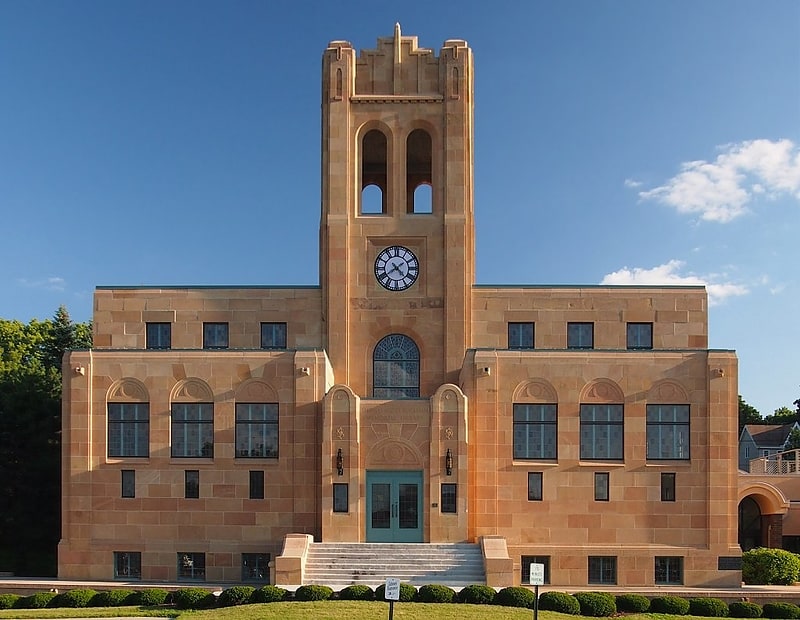
Library in Faribault, Minnesota. The Thomas Scott Buckham Memorial Library is a historic library in Faribault, Minnesota, United States.[4]
Address: 11 Division St E, Faribault
Faribault City Hall
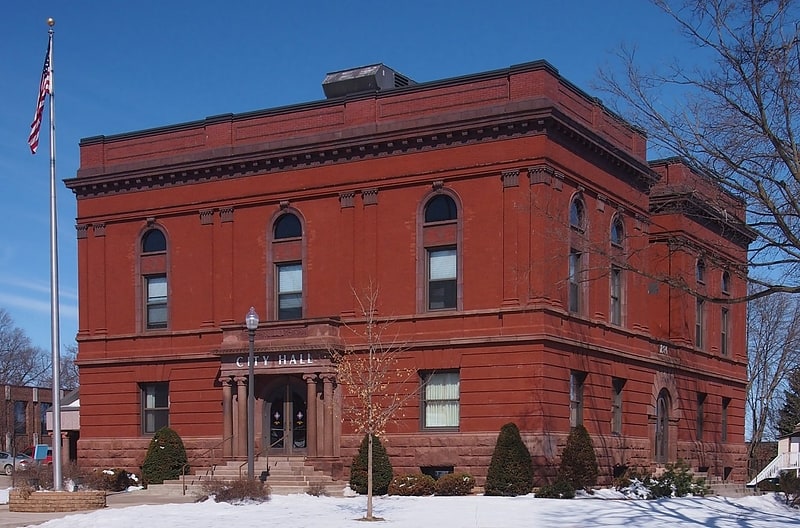
City or town hall in Faribault, Minnesota. Faribault City Hall is the seat of local government for Faribault, Minnesota, United States, in continual service since its completion in 1897. Originally housing a public library as well, Faribault City Hall was listed on the National Register of Historic Places in 1982 for having local significance in the themes of architecture and politics/government. It was nominated for its associations with Faribault's emergence as a regionally important city in the 1890s and a concurrent wave of civic development statewide, and for its Renaissance Revival architecture.[5]
Address: 208 1st Avenue NW, Faribault
Rice County Courthouse and Jail

The Rice County Courthouse, located at 218 3rd Street NW in Faribault, Rice County, in the U.S. state of Minnesota, is an Art Deco building constructed of natural-face Faribault stone horizontally banded at intervals with sawed-faced stone. Nairne W. Fisher of St. Cloud was the architect for the courthouse, and is also credited with designing the Pope County Courthouse. The main rotunda has metal fixtures and Art Deco glass. Polished black and gray Tennessee marble is used extensively in the walls, floors, and stairs, with a terrazzo map of Rice County centered on the floor. The 16-foot-high courtroom on the third floor was finished with fine-grained walnut walls with matching custom-built furnishings. The building was built in 1934 at a cost of $200,000.
A guidebook to Minnesota architecture described the courthouse building as "A near-perfect mixture of the classical and the Zigzag Moderne. Relief sculpture on the sides of the building along 4th and 3rd Streets extols civic virtue, industry and farming. Within, a central rotunda is approached by a Zigzag Moderne staircase; Moderne metal and glass light fixtures abound."
The brick jail building, located at 128 3rd Street NW in Faribault, was constructed in 1910 in the Richardsonian Romanesque style, and was designed by Albert Schippel of Mankato, Minnesota.[6]
Address: 218 3rd St NW, Faribault
River Bend Nature Center

Nature and wildlife, Park, Museum
Address: 1000 Rustad Rd, 55021-6478 Faribault
Faribault Woolen Mill Company

The Faribault Woolen Mill Company is a textile manufacturing company in Faribault, Minnesota, United States, that produces and sells wool blankets and other woolen products. Its products included ingeo, cotton, acrylic and wool bed blankets, pillows, mattresses, pads, and baby blankets, and wool, ingeo and blend throws. The company primarily serves various enterprise sectors. It offers its products through its store in Faribault and nationwide through retailers.
The Faribault Woolen Mill Company's building was listed on the National Register of Historic Places in 2012 for having state-level significance in the theme of industry. It was nominated for being one of the largest and oldest fully integrated woolen mills in Minnesota.
The plant closed in 2009, but reopened in September 2011 under new private ownership. At the time it closed in 2009, Faribault Woolen Mills produced more than half of the new wool blankets made in the United States and was one of the few remaining woolen mills in the country.[7]
Address: 1500 2nd Ave NW, 55021-3018 Faribault
Faribault Viaduct

Bridge. The Faribault Viaduct is a reinforced concrete highway bridge which carries Minnesota State Highway 60 over the Straight River in Faribault, Minnesota, United States.
It was constructed in 1937 by the Works Progress Administration with Art Deco/Classical Revival ornamentation, one of the last major examples in the state. The bridge has also been described as Moderne in style.
When listed on the National Register of Historic Places in 1989, it was noted as a civic project linking a city divided by a river and rail corridor. The bridge was rebuilt in 2008-09 and the decks widened, but the original piers and the three arches over the river remain.[8]
Timothy J. McCarthy Building
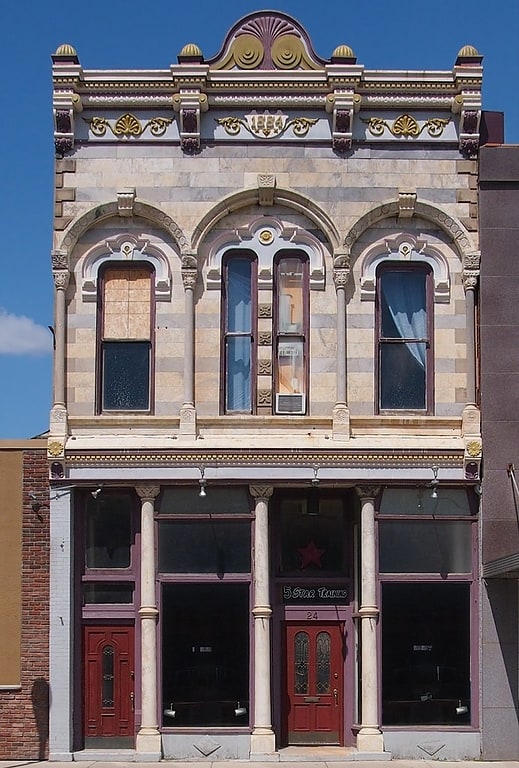
The Timothy J. McCarthy Building located at 24 3rd Street NW in Faribault, Minnesota.[9]
Thomas and Bridget Shanahan McMahon House
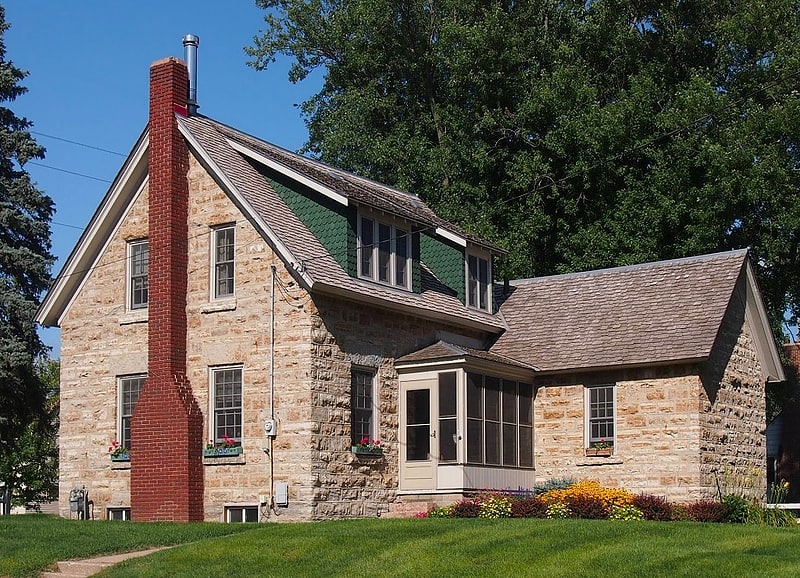
The Thomas and Bridget Shanahan McMahon House, located at 603 Division St. E. in Faribault, Minnesota was built in 1870–1871, and was listed for its Faribault stone architecture on the National Register of Historic Places on July 19, 1990. It was built by Thomas McMahon, a local quarry owner.
Thomas McMahon married Bridget Shanahan in 1849, while they lived in Iowa. The McMahons had 12 children. Three died in infancy. They moved to Faribault in 1856, where Thomas became a quarry owner. He spent $1200 on their house in 1870, and $1000 more finishing it in 1871. The house has a great room and kitchen on floor one and two bedrooms and a bath on floor two. The house originally did not have dormers or an external chimney. It had two internal fireplaces at each east west side. The small porch by the back door is also not original. It originally had a magnificent wooden, hand painted porch on the front. Sometime after 1940, that was lost. Current owners are making an effort to replicate the porch and put it back on.[10]